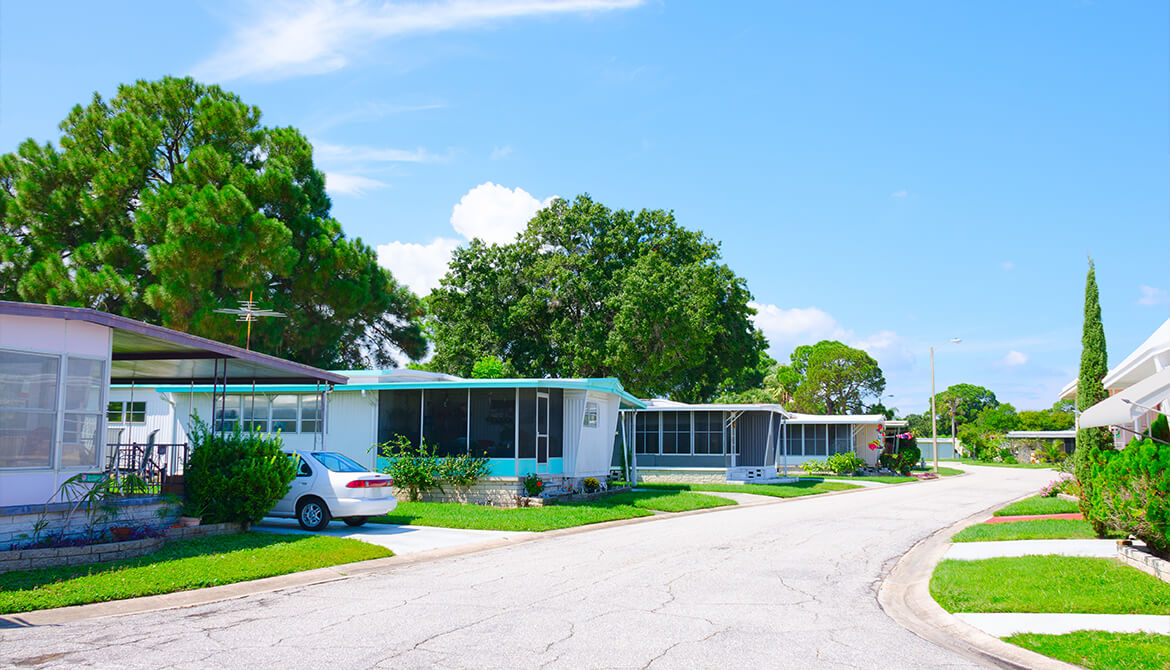Credit unions could influence the expansion of housing funding options for members.
Despite news reports that Fannie Mae and Freddie Mac will start pilot programs for chattel manufactured home loans, don’t look for a big move by them any time soon in this arena.
That slowness is unfortunate because manufactured homes could be a key component to solving the problem of affordable housing in this country. Creating a secondary market for these loans would make it possible for more lenders to provide them. And a large number of people could potentially benefit. The GSEs re-entering the space, also gives the this loan type more credibility as a secondary market investment product.
According to the latest figures published by the U.S. Census Bureau, 18 million Americans live in a manufactured home. Sales had been in a steady decline from the highs of around 370,000 in 1998. The lowest years on record with the U.S. Department of Housing and Urban Development were 2009-2010 with around 50,000 annual sales. There were approximately 93,000 units sold in 2017. Approximately 80 percent of new manufactured homes sold are titled as “chattel,” which means an item of property other than real estate. About 35 percent of those are placed in manufactured home communities and 65 percent are placed on privately owned land. The average sales price in December 2017 was $53,400 for a single-wide unit and $92,800 for a multi-sectional.
The two government-sponsored enterprises are mandated by the Federal Housing Enterprises Financial Safety and Soundness Act of 1992, as amended by the Housing and Economic Recovery Act of 2008, to provide mortgage financing for residential properties that serve low- to moderate-income families. This is a market that some credit unions and CUSOs are very familiar and have been serving since their inception. $2.9 billion Credit Human Federal Credit Union, San Antonio, is one of the top chattel lenders in the country.
Because of credit unions’ experience, they need be a part of the conversation as FHFA works with the GSEs on chattel lending for manufactured homes. The GSEs’ beliefs and memories of chattel lending are influenced by many bad players that did not do things the right way in the 1990s. I believe credit unions can continue to bring discipline to this part of the housing finance industry, as they have done with others.
The key to being successful with chattel lending for manufactured lending is being “all in” dedicated to the product. You need to have a staff that is dedicated and knowledgeable on financing manufactured housing. You have to understand the unique risk characteristics that are inherent in this type of loan, which is much more complicated than a traditional mortgage for a single-family home. Important considerations include where the home will be located, whether it be on private property or in a manufactured housing community, how is it structured, whether it will be a rental space or in a condo-type resident-owned community, and whether the unit is new or used.
Many credit unions offer this type of financing and hold these loans in their portfolio. One of the ways credit unions participate in this space is through the re-financing of existing loans or the financing of used homes being sold in manufactured communities. A lot of times, the rates that consumers are charged for chattel financing are much higher than traditional real property financing options. Many of these loans are to good members with great risk characteristics. This makes re-financing attractive to both the member and the credit union.
A challenge if you are interested in doing this kind of financing for members could be achieving the proper scale to be effective.
There are more opportunities for credit unions to provide chattel financing in some parts of the country than others. According to the census, a high percentage of the manufactured home communities are located in three states: Texas, Florida and California. In 2017 almost one in five new manufactured home shipments were to Texas.
Another way to generate scale could be working with qualified developers to develop new manufactured home communities. Fannie Mae does have a program that for financing new projects, with certain restrictions. For example, funded projects must be for resident-owned communities. These communities are a great option for the homeowners. All the owners of the park have a vested interest in the upkeep of common areas and enforcement of deed restrictions. They also eliminate the risk of the community being sold and rent increasing on spaces.
The big challenge is to find liquidity options for lenders to fund manufactured home chattel loans. Currently there really is no secondary market for these loans for credit unions, other than participations with other credit unions. There is the ability to originate these with a FHA Title I guarantee on loan amounts up to $69,678 and package these to sell as Ginnie Mae securities.
Based on my Internet research, there is not a lot of activity in this space. There appears to be some small amount in the private investor market, but it is very limited. In addition, The Federal Home Loan Bank system will not take chattel manufactured loans as collateral on a borrowing line. Many credit unions are members of the FHLB system. We should use our voice to help influence opinions in this space, with examples of how this product can be done in a safe and sound manner for our members.
I believe there is a bigger need for this product to provide affordable housing in this country. The challenge is to do it in the right way, one that is best for consumers and credit unions.
CUES member Chuck Smith is SVP/chief lending officer for $3.2 billion TDECU, Lake Jackson, Texas.





